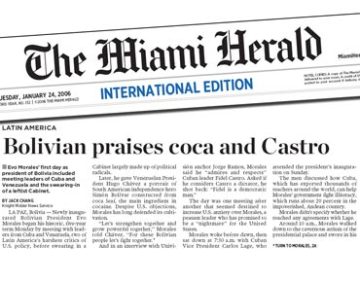The old saying about photos is not something I’m willing to repeat in this blog or any other blog, in fact I’ve already alluded to it too much. This does not however negate the fact that audio slideshows are in a rare position in the medium to really tell a narrative to the reader that can make them laugh, remind them of home and hit too close to home. Audio slideshows are all about taking the audience on a trip.
This is no doubt starkly contrasted to the normal tone and content of this blog. I certainly won’t be discussing OBP in this entry. With that in mind, I have something for you that I think you’ll really like, and next to nothing is required from you. Let’s grab our hats and head to Haiti, with Carl Juste of the Miami Herald as he dives into one of the world’s most downtrodden area for signs of hope and not just life, but living
Here we go.
Basically, this slideshow narrated by Juste tells the familiar story of the unprecedented suffering endured by the people of Haiti in recent years. Most of the photos depict desperate people in the streets, apparently reaching for something in one shot. The slideshow opens with an older man seemingly on a farm with something I could not identify being towed along with him.
Right away, it’s obvious the theme does not intend to be a happy one, which is where Juste missteps, because later on he features a photograph of a sunlit church, that suggests hope of course.H could have done a better job. The last image shown in the slideshow is, in fact the church and I did think it did a nice job leaving a lasting impact on the audience, possibly creating and extended dialoge about some larger international issues.
There were a variety of wide shots, close-ups, and medium level shots. The close-ups I felt worked best because they were intimate and helped drive home points of the narrative, with the commentary coming from Juste himself. This brings me to the point that the only sound on this slideshow was that of his voice, telling the audience that even as a professional photo journalist, he felt a responsibility as a human being to try and help these people.
No captions were provided, nor were any of the names of the subjects, this I believe was a choice made by just as an an attempt to not identify the civilians in the interest of anonymity.
Overall, this was a very powerful and moving slideshow, he could have elaborated on some lines as this was a very brief clip, all things considered.
Take care of yourselves everyone.
